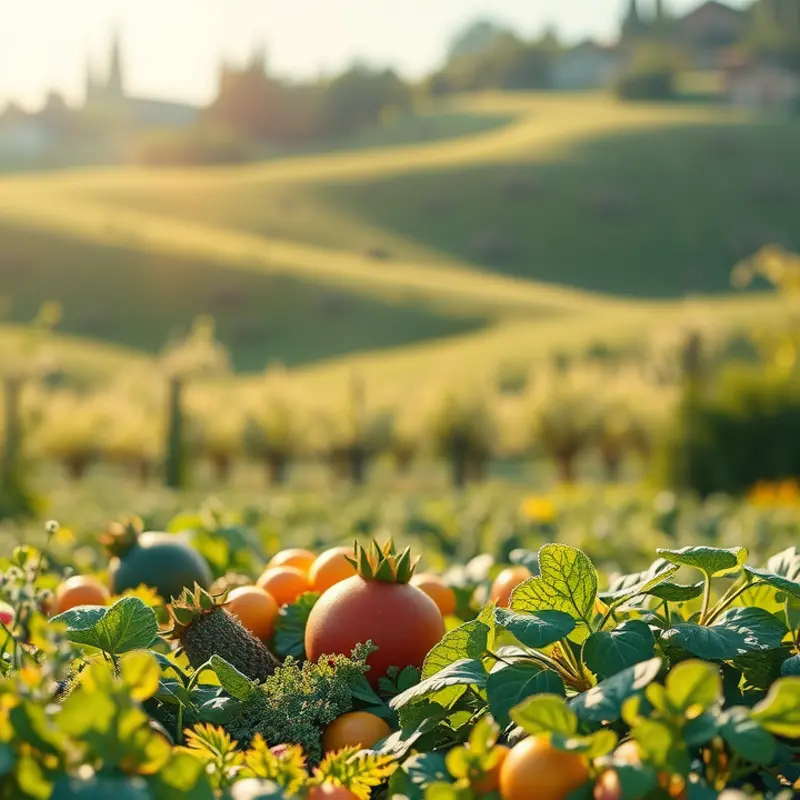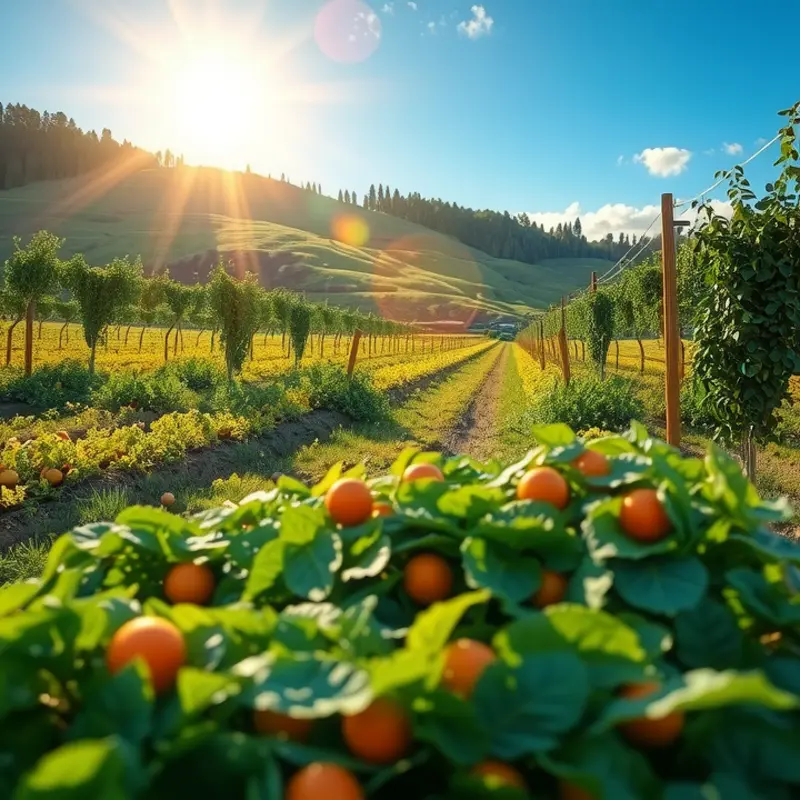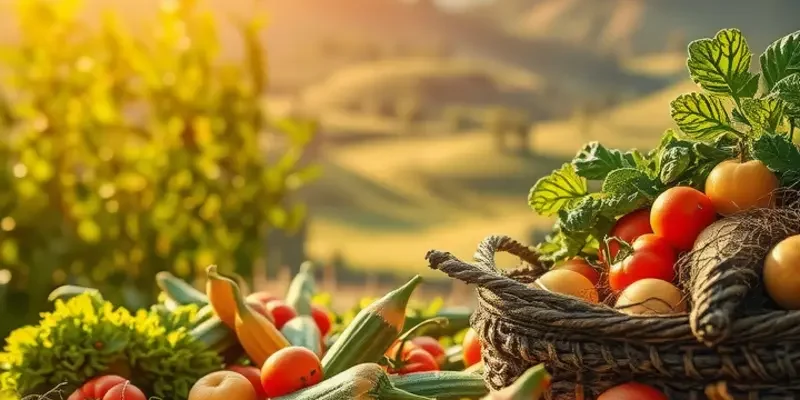Culinary traditions are deeply rooted in the environments from which they originate. From the spices of India to the fresh seafood of Japan, the climate has a profound influence on the ingredients available and the cooking techniques used. Understanding this relationship enriches our appreciation for global cuisines and the stories they tell. As we embark on a journey through diverse culinary landscapes, let’s discover how the climate shapes traditional cooking styles and flavors that define cultures worldwide.
Nurtured by Nature: The Role of Climate in Culinary Diversity

The Earth’s diverse climates have sculpted the palette of human cuisine, from the tantalizingly sweet fruits of the tropics to the robust grains of temperate lands. In each corner of the world, climate serves as both artist and architect, dictating a distinct culinary narrative through the ingredients available and the techniques honed to perfection over generations.
In the tropics, where warmth and moisture are abundant, the culinary landscape is lush and vibrant. Fruits like mangoes, papayas, and bananas thrive, bringing a natural sweetness to dishes that contrasts the fiery heat of local spices. Cooking methods that enhance and preserve such flavors are essential. For instance, grilling becomes a popular technique—a quick and effective way to capture the natural oils and juices of meats and vegetables without losing their essential flavors.
Moving towards colder climates, the necessity for preservation techniques emerges. Fermentation, an age-old method, provides a solution to harsh winters and limited fresh produce. In places like Northern Europe and Korea, fermentation not only preserves but also enhances flavors. The long winters encourage the creation of deeply umami-rich foods such as kimchi and sauerkraut, which are staples in their respective cultures. These foods are not only nutritious but also culturally significant, embodying the resilience of their people against nature’s challenges.
In arid regions, where water is a precious commodity, slow-cooking prevails. The use of sealed pots and low temperatures allows for the gradual tenderizing of tough meats, maximizing moisture retention. Tagines in North Africa exemplify this technique, creating meals that are rich and aromatic despite the sparse environment. The method ensures every drop of flavor and nutrition is meticulously retained.
Temperate regions, blessed with moderate climates, present a diverse bounty of grains, vegetables, and meats. This abundance allows for a fusion of techniques—baking, roasting, and boiling—that combine to create balanced meals year-round. Bread-making, a staple across many temperate zones, demonstrates how grains have been mastered and adapted to suit varying conditions and cultural nuances.
Understanding this intricate relationship between climate and cuisine enhances our appreciation of global culinary traditions. Cooking methods are not merely techniques but are stories told through food, reflecting the ingenuity of cultures that have learned to harness their environment’s offerings. For those interested in exploring how such principles can be applied to modern kitchen practices, a deeper dive into sustainable practices could prove inspiring.
In an era of globalization, maintaining and celebrating these distinct culinary identities requires acknowledgment of the natural factors that shaped them. For those eager to explore new tastes, understanding the climatic roots of cuisines offers a path to savoring the world on a deeper level—an invitation to taste not just food, but the essence of a place.
Cooking with Climate: Techniques Shaped by Environment

Different climates around the world impact cooking techniques in profound ways. These methods reflect the traditions and resources of each locale, revealing a nexus between the environment and culinary practices. In colder regions, slow-cooking techniques have become a staple. The consistent temperature of a slow simmer allows tough cuts of meat to tenderize while flavors meld over hours, a necessity for warming dishes during harsh winters.
In contrast, warmer climates utilize the abundance of heat and sunlight. Sun-drying is a popular method, used for preserving herbs, fruits, and meats. This technique not only lengthens the shelf life of these ingredients but also intensifies their flavors. The high temperatures naturally impart a depth of flavor that’s hard to replicate with artificial means.
Beyond temperature, the changing seasons dictate food preparation. In many cultures, preserving food for winter months involves fermentation and pickling. These methods allow for the use of surplus summer produce. Fermented foods contribute unique tastes to regional diets and are said to offer health benefits, playing a role in cultural health trends.
Tradition plays a significant part in passing down these cooking methods. Elder generations teach younger ones the intricacies of cooking with the climate, ensuring cultural continuity and survival. Instructions for smoking fish, crafting consommés, or curing meats are often as much about storytelling as they are about technique.
Modern trends continue to evolve from these traditional roots. Today, many chefs worldwide are rediscovering and adapting historic techniques to create new culinary experiences. The resurgence of ingredients supporting cartilage, for example, blends traditional nutrient wisdom with modern health interests, as can be explored here.
From the deserts of the Middle East to the forests of Scandinavia, the interaction between geography and cuisine is ever-present. Whether it’s learning to cook with indigenous spices or mastering the art of preserving food for less bountiful seasons, the environment directly influences what’s on our plate. These culinary traditions adapted by climate not only nourish the body but maintain a lineage of flavor and heritage, binding communities with each bite.
Final words
Culinary traditions are vibrant tapestries woven from the threads of climate, culture, and history. Exploring how the environment shapes flavors and techniques provides insight into the heart of communities around the world. From the spices harvested in arid lands to the fresh produce grown in temperate zones, each dish tells a story of resilience and ingenuity. As you embark on your own culinary pursuits, consider the influence of environment on the recipes you cherish. Embracing these traditions not only honors the food itself but also connects you to the rich narratives embedded within every bite, celebrating our shared human experience through the universal language of cuisine.








